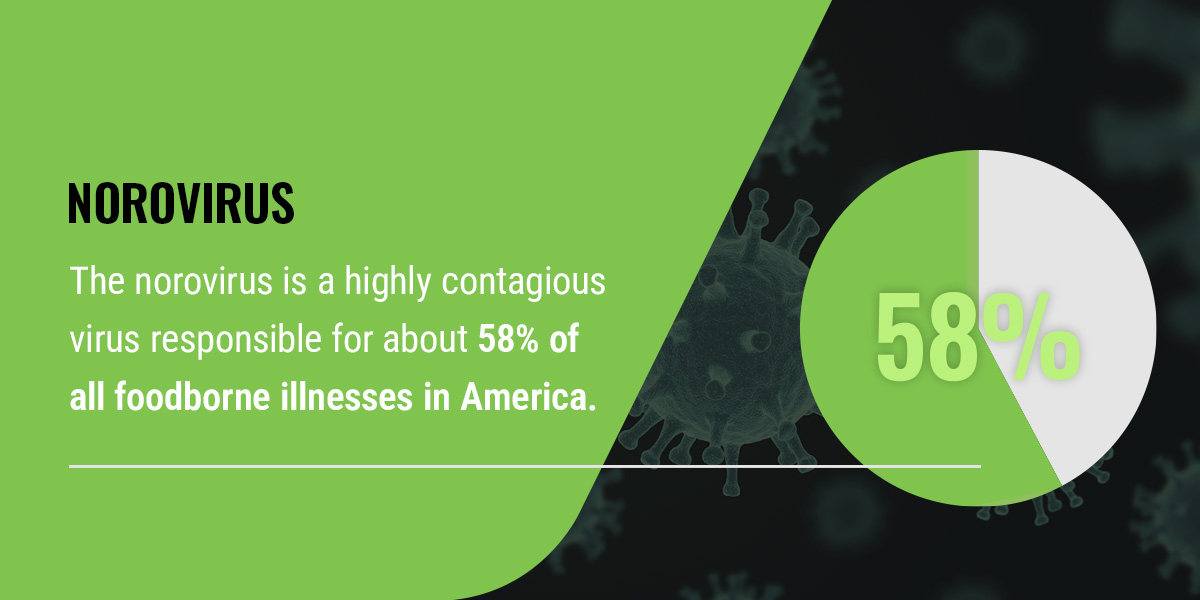Understanding Foodborne Illnesses and How to Prevent Them
Sep 30th 2024

Foodborne viral diseases have a massive impact on the public and the economy. These illnesses cost the United States over $17 billion annually, impacting 48 million people. Foodborne illnesses also have repercussions on the food industry. Businesses must implement stringent preventive measures to ensure their customer's safety and comply with relevant regulations — their reputation depends on it.
For industry professionals, understanding the causes of foodborne illnesses takes them one step closer to preventing them.
What Are Foodborne Illnesses?
Foodborne illnesses, or diseases, are infections caused by consuming contaminated foods and drinks. These infections are slightly more serious than the common cold. Foodborne illnesses are responsible for about 128,000 hospital cases and 3,000 deaths annually in the U.S. alone.
Thus, regulatory bodies like the U.S. Food and Drug Administration (FDA) and the Department of Agriculture (USDA) exist to enforce regulations to minimize the risk of spreading. For example, the FDA's Food Code provides food handling best practices for retail settings.
The Big 6 Foodborne Pathogens
Most foodborne illnesses are caused by six microscopic organisms called pathogens. Learn more about each below.
1. Norovirus
The norovirus is a highly contagious virus responsible for about 58% of all foodborne illnesses in America. So, if you're coming down to a case of food poisoning after visiting a restaurant, chances are it's the norovirus.

Here's a quick overview of this virus:
- Causes: Direct contact with an infected person and contaminated food, water or surfaces.
- Symptoms: Nausea, vomiting, diarrhea, stomach cramps and sometimes fever.
- Foods: Typically found in ready-to-eat foods, shellfish and contaminated water.
- Incubation period: Between 12 and 48 hours.
- Duration: Ranges between 12 and 60 hours.
- Prevention: Wash hands properly and frequently, buy shellfish from an approved supplier and avoid bare contact with ready-to-eat foods.
2. Hepatitis A
The hepatitis A virus (HAV) is an infection that causes liver inflammation. Although HAV doesn't result in chronic liver diseases like hepatitis B and C, it may result in debilitating symptoms and rarely fulminant hepatitis, which is acute liver failure.
Explore a few things to know about HAV:
- Causes: Ingestion of food or water contaminated by feces from an infected person.
- Symptoms: Jaundice, loss of appetite, nausea, diarrhea and fever.
- Foods: Ready-to-eat foods and raw shellfish or shellfish from contaminated water.
- Incubation period: Between 15 and 50 days.
- Duration: Can range from two weeks to three months.
- Prevention: Practice good hand hygiene, use clean water sources, cook shellfish thoroughly and get vaccinated.
3. E. coli
E. coli is a diverse group of bacteria primarily found in the intestines of humans and animals. Most are harmless, but some can make you either mildly or severely sick.
Here are a few facts about E. coli:
- Causes: Consuming food or water contaminated with fecal matter, often from animals.
- Symptoms: Severe stomach cramps, diarrhea (often bloody), vomiting and mild fever.
- Foods: Raw or undercooked beef, unpasteurized milk, fresh produce and contaminated water.
- Incubation period: Between one and eight days.
- Duration: Ranges between five and 10 days.
- Prevention: Cook meat thoroughly, avoid unpasteurized dairy products, wash produce and prevent cross-contamination in the kitchen.
4. Salmonella Non-Typhoidal
Non-typhoidal salmonella is a bacteria responsible for causing about 150 million foodborne illnesses globally. Ingesting just a small amount can make you sick.
Below is a quick overview of the salmonella non-typhoidal:
- Causes: Ingesting contaminated food and water and getting in contact with infected animals.
- Symptoms: Acute diarrhea, abdominal pain, vomiting or fever.
- Foods: Raw poultry, eggs, beef, unpasteurized milk and contaminated produce.
- Incubation period: Between six and 48 hours.
- Duration: Can last between four and seven days.
- Prevention: Thoroughly cook poultry and eggs, avoid cross-contamination and maintain proper kitchen hygiene.
5. Salmonella Typhoidal
Typhodial salmonella is the strain responsible for causing typhoid fever — a serious illness — and other foodborne diseases.
A few things to know about salmonella typhoidal:
- Causes: Consuming foods or water contaminated with feces from an infected person.
- Symptoms: High fever, weakness, abdominal pain, loss of appetite and diarrhea.
- Foods: Contaminated water and foods handled by infected people.
- Incubation period: Between 10 and 14 days.
- Duration: Can last between four and seven days.
- Prevention: Ensure you have access to clean water, practice good sanitation and get vaccinated if traveling to high-risk areas.
6. Shigella
Shigella is a bacteria that causes shigellosis, an infectious disease with about 450,000 cases in the U.S. annually.
Here's a quick overview of shigella:
- Causes: It's spread through direct contact with feces from an infected person or ingesting contaminated foods and drinks.
- Symptoms: Diarrhea, which is often bloody, abdominal pain, dehydration and fever.
- Foods: Foods easily contaminated by hands like salads or raw produce and contaminated water.
- Incubation period: Between four and seven days.
- Duration: Ranges between 24 and 48 hours.
- Prevention: Wash hands thoroughly, ensure safe food handling and avoid consuming contaminated water or raw produce.
The 4 C's of Food Safety
Knowing and implementing the four C's of food safety is the best way to prevent foodborne illness.
1. Clean
Practice good hygiene in general — be it personal, kitchen or any other item or space. Germs can survive in many places, but using appropriate cleaning products and implementing proper cleaning practices can remove them.
2. Cook
Most foodborne illnesses can be prevented by safely and properly cooking food at the right temperature to kill harmful microorganisms.
Always cook food to the recommended temperatures and use a food thermometer to check when it's done.
3. Chill
This C focuses mainly on storage. It's crucial to keep perishable goods at the right temperature when storing them for later. Colder temperatures help slow bacterial growth. Ensure you refrigerate perishables, leftovers and cooked foods within two hours to prevent bacteria from multiplying.
4. Cross-Contamination
Cooking can be chaotic, but we must focus on keeping things organized and separate to prevent cross-contamination. For example, use a different cutting board and utensil for meat, poultry, eggs, seafood and produce. The same goes for buying, handling, packaging and handling food while shopping, cooking and storing.
Quality Assurance Tools for Foodborne Illness Prevention
Preventing foodborne illnesses starts with the right tools. Quality assurance (QA) tools can be highly beneficial for businesses in the food and beverage and related industries.
Trust QA Supplies to find the best tools for your application. We provide essential equipment designed for professionals who monitor environmental conditions to maintain the quality of perishables.
Temperature measurement is critical, and we offer a range of solutions, from premium probe thermometers for instant, accurate readings to infrared thermometers that assess hard-to-reach areas.
Some data loggers help track food and beverage temperatures during transit, and thermal imaging cameras help detect issues like leaks or mold that could compromise safety.
Businesses in the industry should implement QA practices to help with:
- Risk mitigation
- Regulatory compliance
- Brand reputation
- Operational efficiency
Protect Your Brand With QA Solutions
The prevention of foodborne illness is always a top priority. Your organization needs reliable, accurate quality assurance tools to combat these diseases. At QA Supplies, we have a full range of cutting-edge QA tools and technologies designed to keep your processes safe and compliant.
Contact us online today — our experts are ready to help you find the perfect solutions for your needs.


